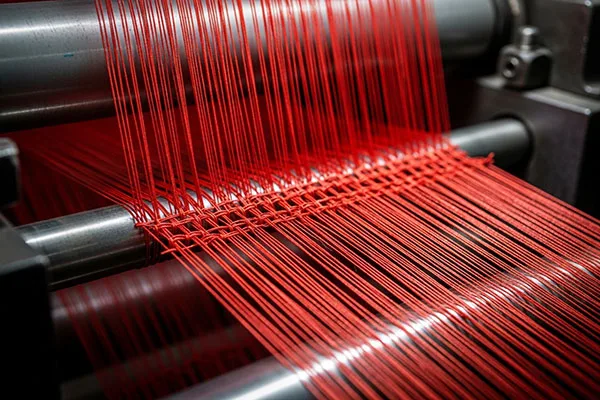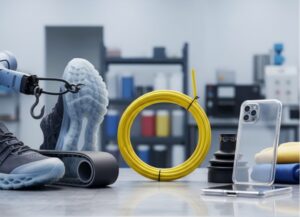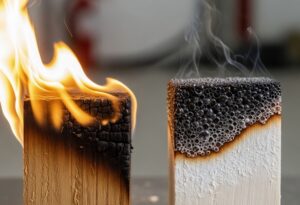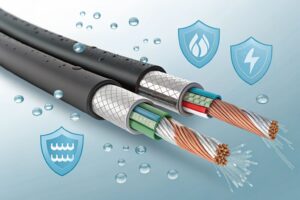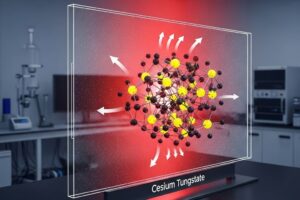The screen mesh is a crucial component in modern papermaking. It supports pulp flow and maintains paper flatness. The durability and stability of the material directly affect production efficiency and paper quality. Polyester monofilament is widely used in screen meshes due to its outstanding mechanical performance, chemical resistance, and wear resistance. However, over time, monofilaments face challenges such as hydrolysis, UV exposure, and thermal degradation.
To effectively extend the service life of polyester monofilaments—particularly in resisting hydrolysis—advanced material modification techniques and proper maintenance measures have become focal points in industry research. This article presents effective strategies that emphasize the use of carbodiimide as a chemical modification to help enterprises extend the life of their screen meshes.
1. Current Situation and Challenges of Polyester Monofilament in Paper Machine Clothing Screens
1.1 Benefits of Polyester Monofilament
- High strength and wear resistance: Ensures stability during high-speed operations.
- Excellent chemical resistance: Ideal for humid environments and requires minimal maintenance.
- Good elasticity and tensile strength: Maintains flatness under mechanical loads.
1.2 Common Challenges
- Hydrolysis: Ester bonds break down in humid environments and at high temperatures, leading to performance degradation.
- UV aging and environmental degradation: Causes embrittlement and accelerates damage.
- Wear and fatigue: Repetitive bending and mechanical abrasion accelerate aging.
2. Main Factors Affecting the Lifespan of Monofilament
- Environmental temperature and humidity: High levels accelerate hydrolysis of ester bonds.
- Material structure and purity: Crystallinity, chain orientation, and polymer purity all affect hydrolysis resistance.
- Handling and storage: Improper practices can lead to premature degradation.
3. Innovative Solutions Using Carbodiimide and Anti-Hydrolysis Technologies
3.1 Surface and Material Treatments
- Chemical modification: Incorporation of anti-hydrolysis functional groups via carbodiimide (e.g., HyMax 1010 anti-hydrolysis agent), which react with ester bonds to form more stable, hydrolysis-resistant amide rings. What is anti-hydrolysis agent?
- Surface coating techniques: Application of protective layers that act as barriers against moisture ingress.
3.2 Carbodiimide and Crosslinking Agents
Carbodiimide reacts with the carboxyl and hydroxyl groups in polyester to form stable ester or amide linkages. This creates a crosslinked network that resists hydrolysis.
- Application process: Carbodiimide can be added during fiber fabrication or as a post-treatment to ensure comprehensive crosslinking and a stable molecular matrix.
3.3 Selecting High-Quality Raw Materials
The chemical stability of polyesters is enhanced by using high-molecular-weight, highly crystalline raw materials that inherently resist hydrolysis.
4. Process Optimization and Material Formulation to Improve Durability
- Increase crystallinity and chain orientation: Densely packed molecular structures improve hydrolysis resistance.
- Multifunctional formulations: Include anti-hydrolysis agents and thermal/UV stabilizers within the polymer matrix.
- Adjust production parameters: Precision control of spinning temperatures and cooling rates optimizes fiber microstructure.
5. Maintenance and Operational Guidelines
- Early detection: Monitor for signs of aging or mechanical damage.
- Rational cleaning and storage: Avoid exposure to corrosive chemicals and UV radiation.
- Prompt replacement of aged monofilaments: Prevent the spread of defects across the mesh system.
6. Industry Trends and Performance Results
Many papermakers adopting carbodiimide-modified polyester monofilaments report significantly longer service life—extended from around six months to over a year. These modifications effectively resist hydrolysis and environmental aging. Future developments may include the integration of nanotechnology, real-time monitoring systems, and advanced material enhancements for industrial screen durability.
Conclusion
The key to improving the durability of polyester monofilaments in paper machine screens lies in the application of effective anti-hydrolysis technologies. Chemical modifications based on carbodiimide provide structural stability and hydrolysis resistance. By optimizing material selection, refining processing techniques, and enforcing proper maintenance practices, manufacturers can significantly extend service life and reduce operational costs.
Contact our team to learn more about hydrolysis-resistant solutions and advanced monofilament modification technologies. We offer customized support to help you build more durable and reliable screening systems.
Visit our website for additional technical resources and expert consultations. We look forward to assisting you in your pursuit of continuous improvement.

